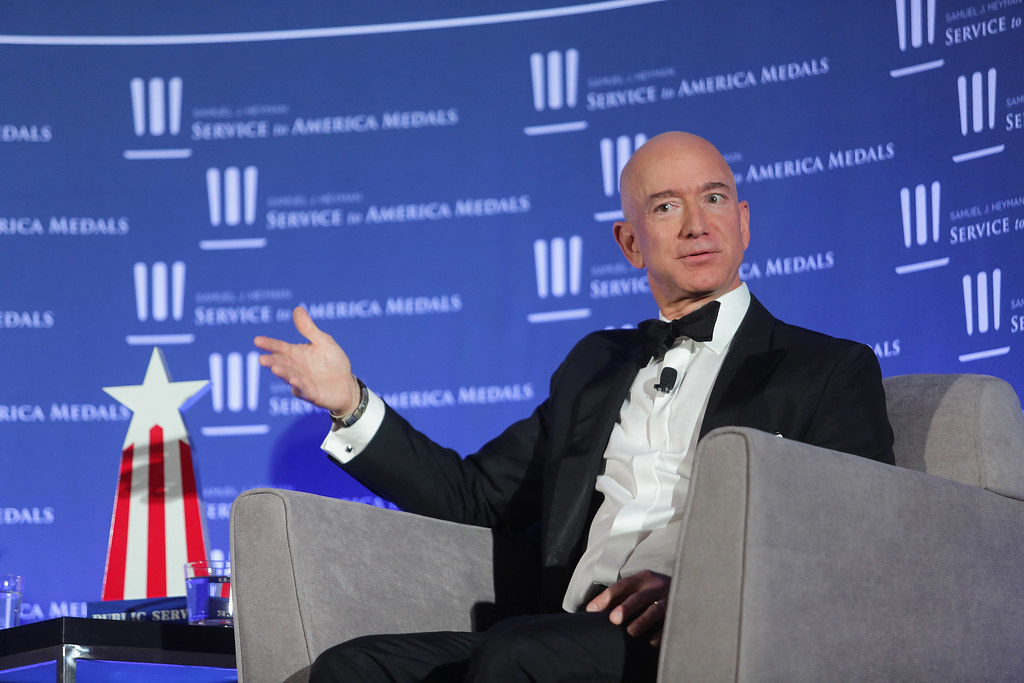Project Nessie, how does Amazon’s secret pricing algorithm work?

From the antitrust case against Amazon it emerged that Jeff Bezos' giant would have used a secret algorithm, called "Project Nessie", to evaluate how much it could inflate prices based on the moves of competitors. The trick would have earned him a billion dollars. All the details
The lawsuit filed in late September by the Federal Trade Commission (FTC) against Amazon for anticompetitive practices “is largely full of things that we generally already knew,” writes Techcrunch . But now investigations reveal that Jeff Bezos' giant would have used a secret algorithm, called "Project Nessie", to determine how much to increase prices so that competitors would follow.
HOW AMAZON'S SECRET ALGORITHM WORKS AND HOW MUCH IT MADE THEM EARN
Much of the lawsuit, including the parts describing what exactly Project Nessie is, was written anonymously. However, Forbes reported, The Wall Street Journal , which saw an unredacted version of the lawsuit, reported that the algorithm was being used by Amazon to gauge how much it could raise prices before its competitors stopped raising them.
Per the WSJ , Nessie was inflating prices and seeing if other retailers, like Target, would follow suit. If competitors kept the price lower, the algorithm automatically pushed Amazon's prices back down. Nessie also allowed the company “to match competitor sales, but when those sold out at some competitors, Amazon was still able to match a lower price.”
An Amazon spokesperson, quoted in a recent book by a former Vox journalist, described Project Nessie as “an algorithm designed to avoid matching competitors' prices when they get too low, thus avoiding a price 'death spiral'. matching".
According to WSJ sources, the algorithm, which has no longer been in use since 2019, "brought the company a billion dollars in revenue."
COMPARISON OPINIONS: FTC VS AMAZON
The FTC calls Project Nessie “a method of unfair competition” that has “no valid and recognizable justification” and a violation of the FTC Act. The lawsuit filed by the FTC, along with 17 states, describes Amazon as a “monopolistic” company which uses a “set of anti-competitive and unfair strategies” to “illegally maintain its monopoly power” in online retail.
Among the strategies adopted there would be "anti-discounting measures that punish sellers who offer lower prices on platforms other than Amazon, incentive structures that force sellers to also use Amazon's advertising and logistics services and the replacement of search results relevant with paid ads to promote Amazon products and the products that Amazon pays for this right”.
Amazon, however, which did not recently respond to requests for comment, only told the WSJ last week that "if (the FTC) were successful in this lawsuit, the outcome would be anti-competitive and anti-consumer, because we would have to stop many of the things what we do to offer and highlight low prices, a perverse outcome that would be directly contrary to the objectives of antitrust law.”
LINA KHAN'S WAR
One of the key figures in one of the largest antitrust lawsuits in the United States is 34-year-old FTC Chairwoman Lina Khan. As Forbes recalls, in 2017, while still a law student at Yale University, she published Amazon's Antitrust Paradox , “an influential essay that offered a new perspective on antitrust law and specifically cited Amazon as a quintessential example of how large corporations technologies have become monopolistic and must be limited." Because of this essay, the e-commerce giant petitioned the FTC with a complaint, arguing that Khan should recuse himself from participating in any actions regulating Amazon as a company due to his past criticisms.
After graduating and working for a few years as legal counsel for the House Judiciary Committee, Biden nominated her to chair the FTC in 2021. However, despite her determination to wage war on monopolies, Khan has so far failed to achieve many successes: A lawsuit against Microsoft to block its $69 billion purchase of video game publisher Activision Blizzard failed, as did one against Meta to block its purchase of virtual reality app Within Unlimited.
Regarding the Amazon case, he said last month that “the complaint contains detailed allegations about how Amazon is using its monopoly power to enrich itself by raising prices and reducing service for the tens of millions of American families who shop on its platform and for the hundreds of thousands of businesses that rely on Amazon to reach them."
THE UNCERTAIN OUTCOME OF A LONG TRIAL
But even in this case the road for Khan is all uphill. As Vox notes, “history shows that antitrust lawsuits are hard to win.” It will certainly take years before the case goes to trial and even longer before there is a final resolution, assuming it is not abandoned or settled first, so we are only at the beginning of a long process.
This is a machine translation from Italian language of a post published on Start Magazine at the URL https://www.startmag.it/economia/project-nessie-come-funziona-lalgoritmo-segreto-di-amazon-per-i-prezzi/ on Wed, 04 Oct 2023 09:31:10 +0000.
